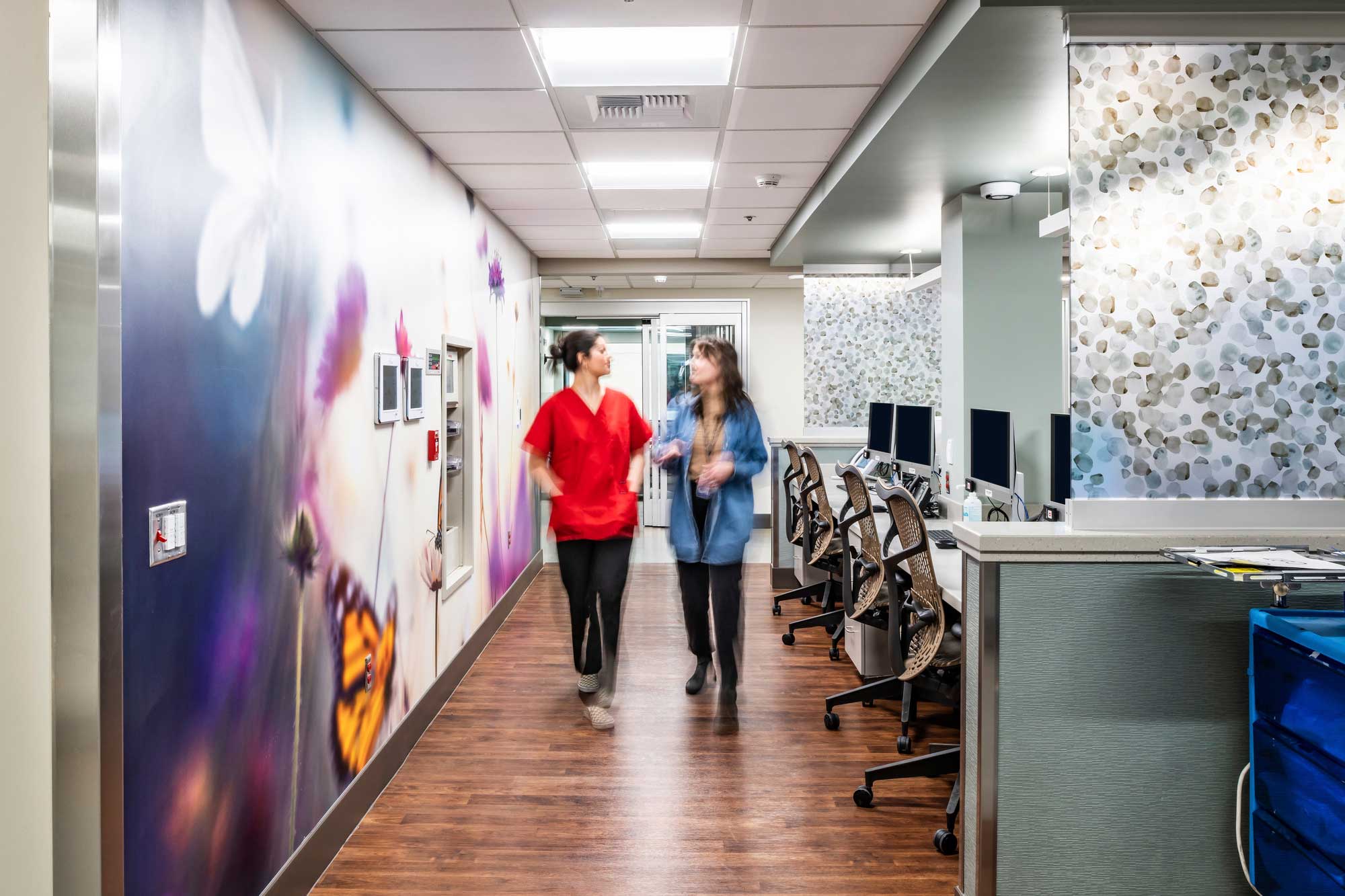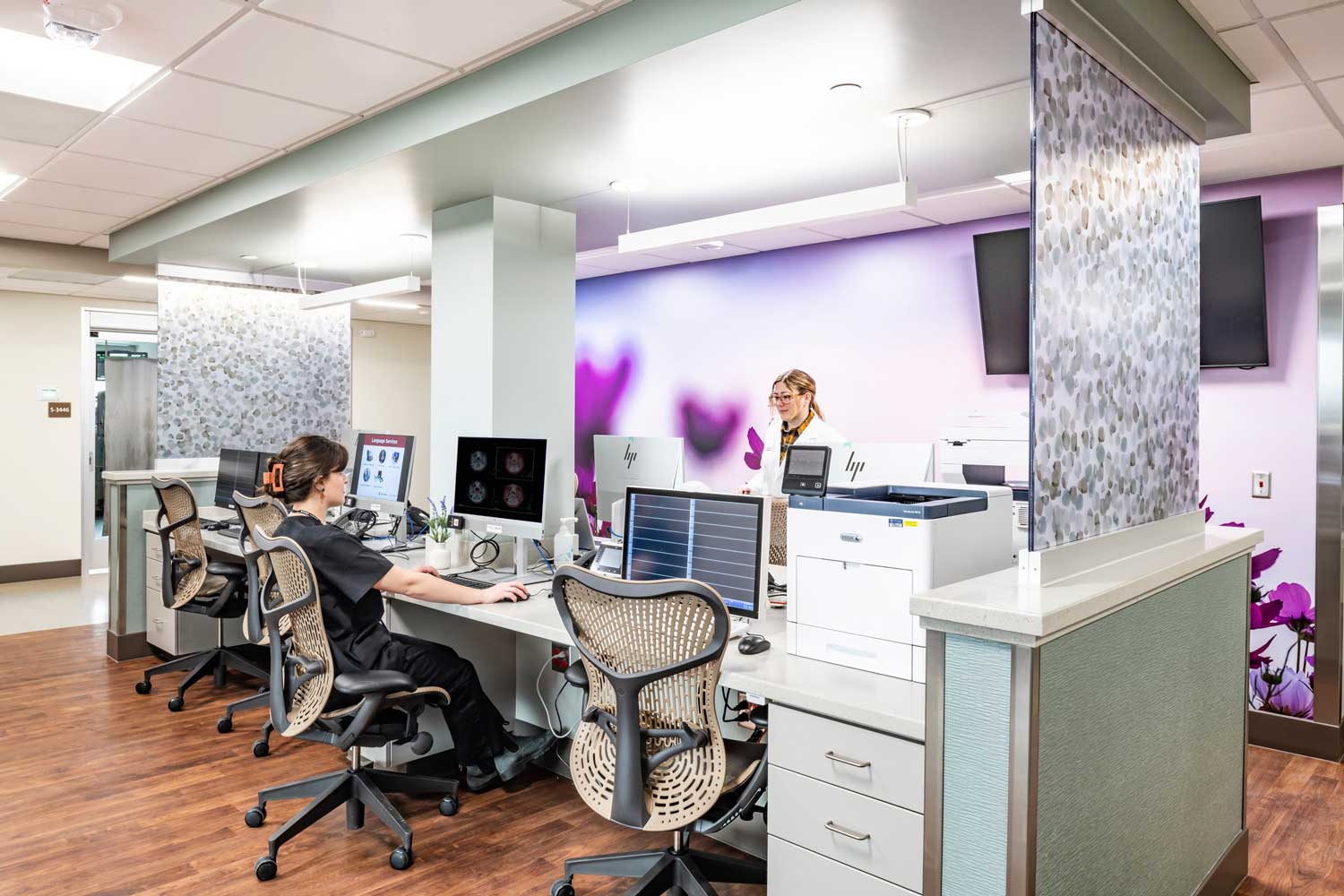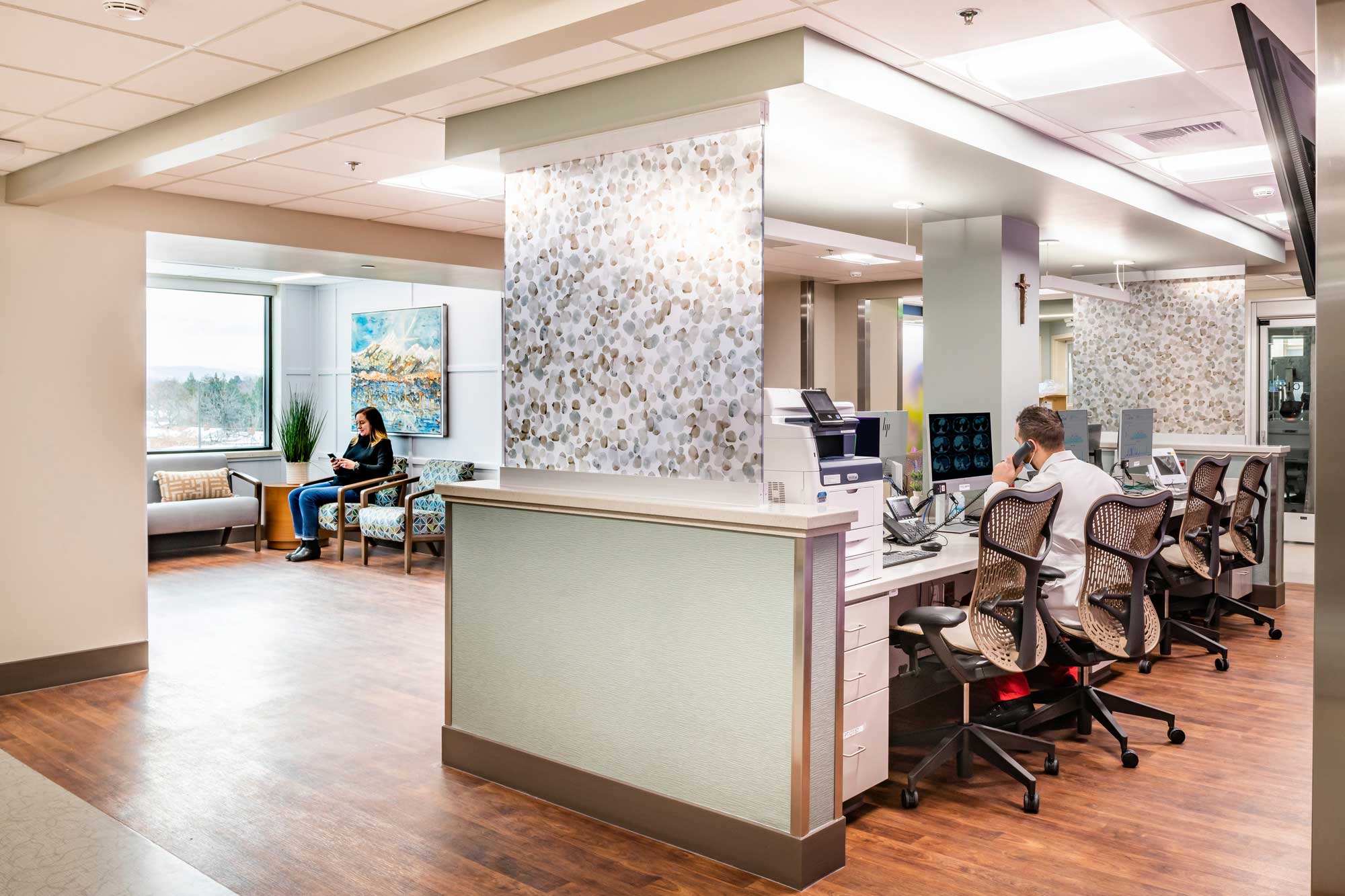Designing Workplaces that Care for Healthcare Professionals
Healthcare professionals have incredibly stressful jobs — the nature of their work, the long days, and the potential consequences of each decision all create a higher probability for burnout. And of course, we saw how dire the situation became for people in the profession during the pandemic. Over the last few years, much thought has gone into how healthcare professionals are trained, the benefits and support services they need, and the types of environments necessary not only to facilitate their work, but to help them decompress and take care of their own mental and physical health.
I’ve been an architect working in the healthcare industry for 30-plus years, and while I’ve seen a lot of fluctuation in how healthcare is approached — most dramatically the shift from an institution-focused mindset to a patient-focused mindset — I believe designing places of respite within the healthcare environment, specifically for practitioners, is fundamental to realizing holistic, beneficial projects.
At Cushing Terrell, we’re a multidisciplinary design firm, working in a variety of markets, and with the benefit of bringing all that design knowledge to the table to consider different ways of looking at workspaces, including work environments in the realm of healthcare. When thinking about how we can best support healthcare professionals through design, we’ve spent a lot of time talking to our clients and their staff. Below are a few of the design strategies we’ve developed as a result to achieve the most positive impact on the health and well-being of the people who care for ourselves, our families, and our communities.
Soothing, Sensory Spaces
Holistic, thoughtful design can have a big influence on how people feel. And having a space to escape to that promotes a sense of calm can offer healthcare professionals a respite during chaotic, busy days.
Research has shown that excessive and/or constant noise in the workplace can negatively impact both people’s mental and physical health. The beeping of machines and alarms and the traffic of people coming and going can feel overwhelming in healthcare environments, thus employing both acoustic and technological strategies can help mitigate the stress on both patients and staff.
For staff, a respite area designed with acoustic strategies and materials to reduce noise-transfer is the first step in creating a sanctuary-like environment. Pair smart acoustic design with amenities such as quiet “phone” booths or pods with comfortable seating and the ability to connect to Wi-Fi and listen to a relaxing mediation and you provide an opportunity for people to reset their mental state.

Offering a variety of seating — including enclosed phone, nap, or solitary work pods — within staff lounges and breakrooms provide people with exactly what they need for different states of mind and different activities.
To enhance comfort for a variety of users, consider diverse seating options — some aimed at social interaction, some aimed at solo quiet time — as well as adjustable, adaptable lighting. Lighting selection is especially important for respite spaces with more diffuse, ambient lighting incorporated to provide a break from intense overhead lighting. Offering users control of the lighting with different types that can be adjusted for strength and direction adds to the comfort level. Banks of windows with adjustable blinds and views of the outdoors and landscaped areas are also a good option. Imagine taking 15-20 minutes to sit back in a lounge chair, stare out at big leafy green trees, and listen to a recording of bird song.
Biophilic design is another consideration for respite spaces, and one that offers many benefits in terms of visual appeal, indoor air quality, and creating a feeling of separation from the regular workspace. Think green walls and indoor gardens, materials and textures that mimic natural patterns, and tasteful, soothing artwork of landscapes or places you might escape to on vacation, for example.
Taking inspiration from our commercial workplace design team, many of these amenities can also benefit healthcare professionals.
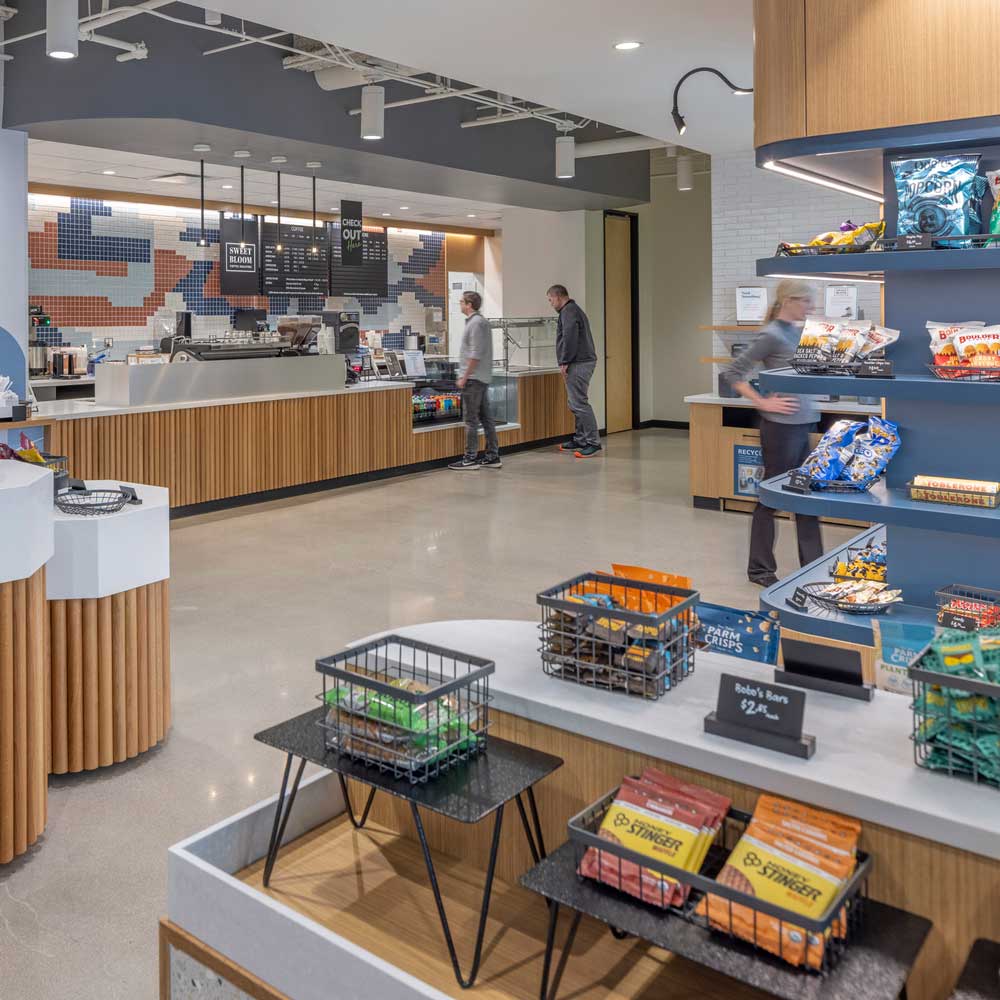
Staff-only grab-and-go cafes and kitchenettes stocked with healthy, quick meals and snacks give healthcare professionals — who may have very few breaks in very long days — convenient options to keep up their energy.
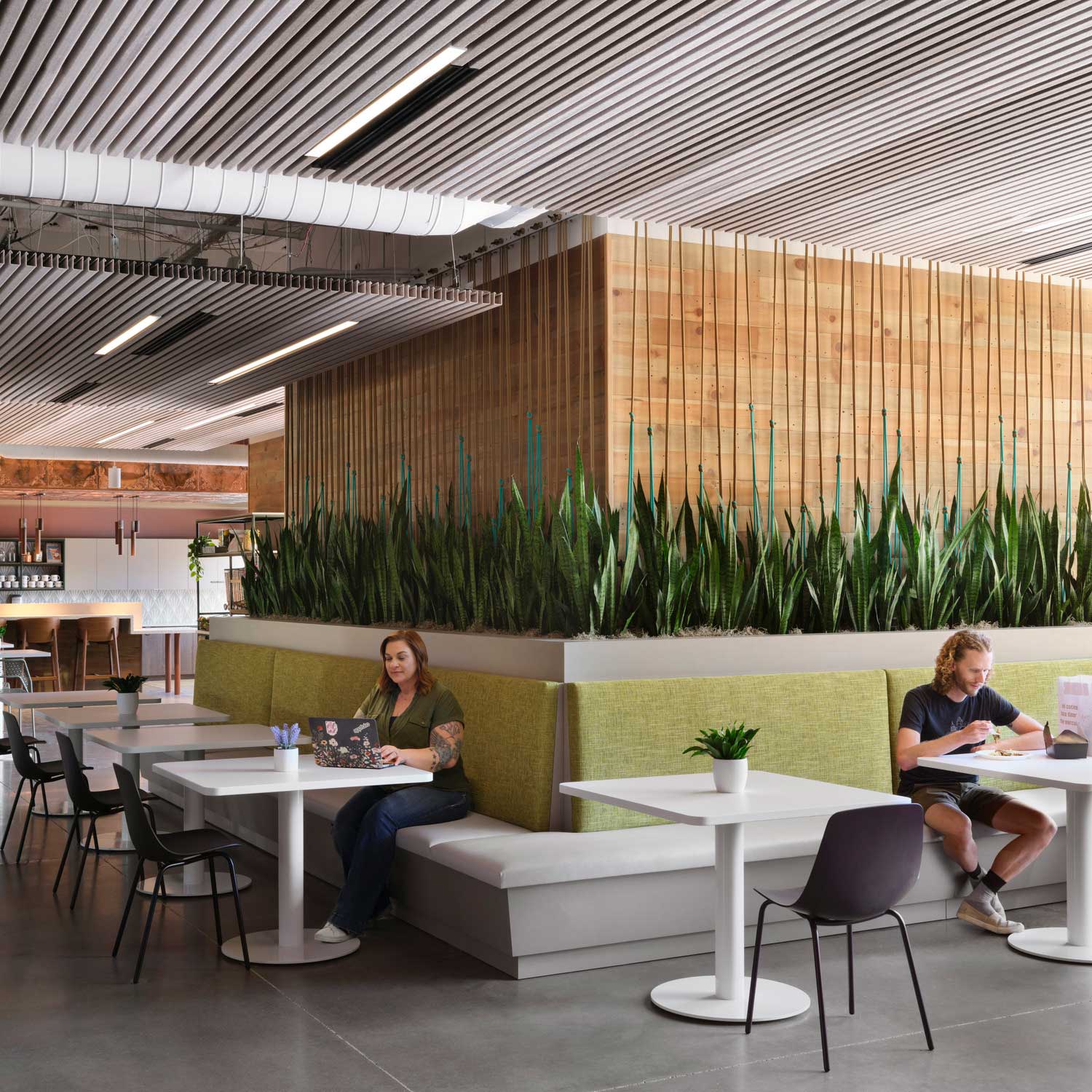
Within eating areas and cafeterias, a variety of seating options support both private and social time. Daylighting, biophilic design elements, and views to the outdoors provide health and wellness benefits.
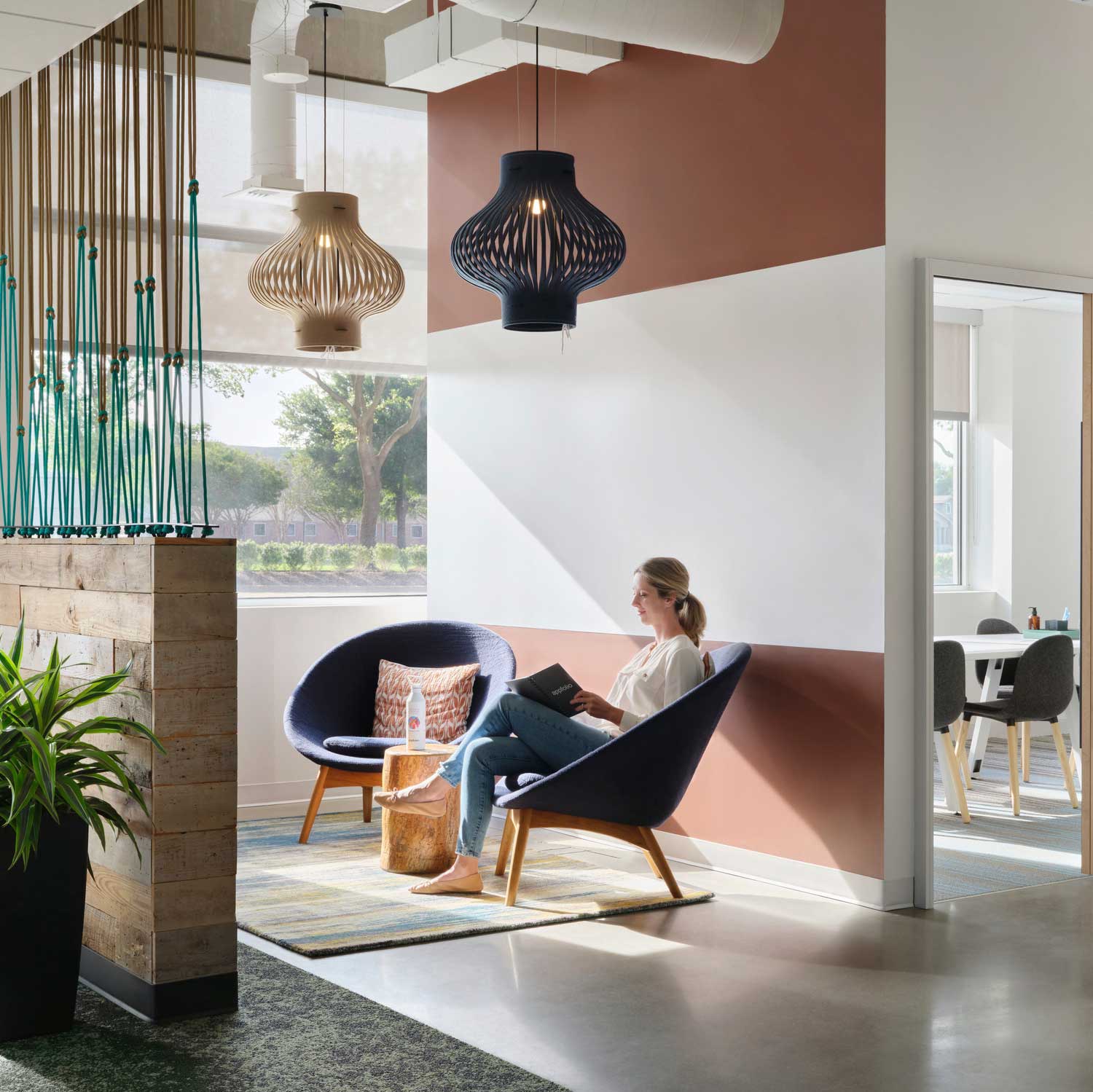
Comfortable seating areas in soothing colors that provide some privacy and incorporate technology are a great addition to staff lounges and breakrooms.

Locker rooms offer staff safe, secure places to store their belongings, including a change of clothes so they might take part in exercise via walking paths or yoga classes, for example, during or after the work day.
Staff-Only Areas
Most people need time off from being constantly “on,” especially in environments where emotions run high and people are experiencing the gamut of emotions. To be your best self for others and to be able to show the utmost empathy and compassion, space away from those you’re caring for can be critical. Offering specific areas such as lounges, small kitchens or cafés, restrooms, and locker rooms intended for staff is a way to create that separation and time away when needed.
These areas should be easily accessible, so space planning and adjacencies are important, and they should be located away from patient care areas to ensure a peaceful environment. These types of spaces can bring people together where they can talk about their days, commune in a more casual setting, and offer support to each other. Using design strategies, we can help create community and a stronger support network among healthcare professionals.
A big part of caring for our health is making sure we’re eating healthily, and this can be particularly difficult during long, busy workdays. For healthcare professionals, due to their shifts and schedules, this difficulty is compounded. From full-service cafés to fully stocked breakrooms or kitchenettes, there are many options for providing what’s needed to fuel busy people throughout their days (and nights).
Both the furniture selections and access to technology, such as charging stations for electronic devices, in these areas are important for functionality and comfort.
Outdoor Spaces and Micro-Gyms
We know getting outside and getting exercise is a great way to de-stress. And if we can fit it into the workday, or before or after, it can help stimulate a positive outlook and provide time for contemplation.
Our architecture and landscape architecture teams collaborate on a variety of features that facilitate being active outdoors and create a connection to nature, such as gardens, patios, and courtyards; walking and running paths; and outdoor spaces with gym equipment. Easy access and a convenient location help people take advantage of outdoor spaces, even when time is scarce. For example, creative utilization of outdoor nooks alongside buildings can turn unused space into compelling, landscaped areas for people to conveniently get outside. Lighting is also important for these areas to support users’ ability to take advantage of these spaces at all times of the day and night.
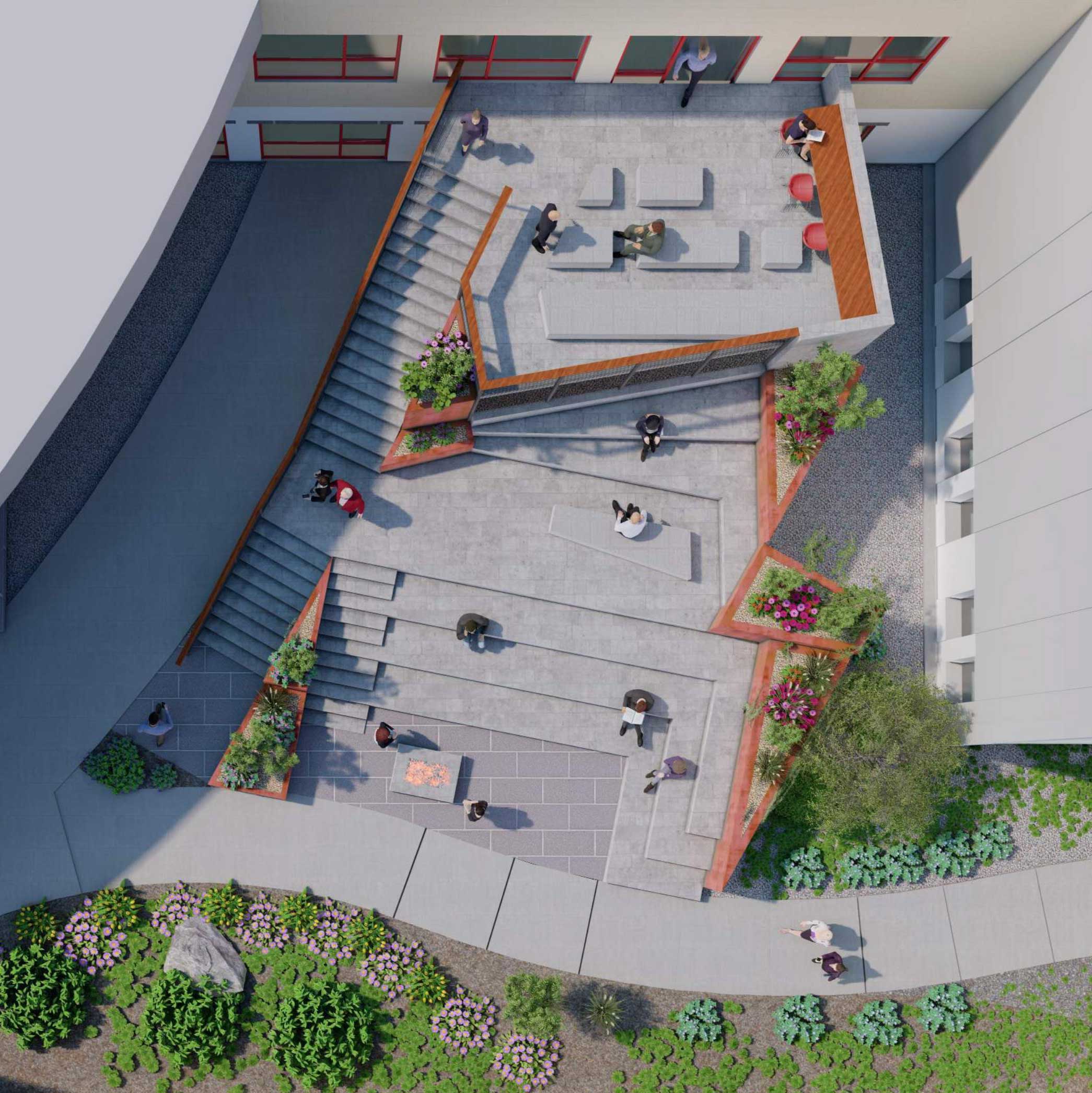
There are many workplaces these days that have gyms or workout areas in their buildings. Think of the big technology companies with a variety of building/campus facilities to support employees who might be working long days and/or have long commutes. When supporting mental and physical health is a priority, as well as recruitment and retention, exercise facilities can go a long way in helping healthcare workers maintain balance in their lives.
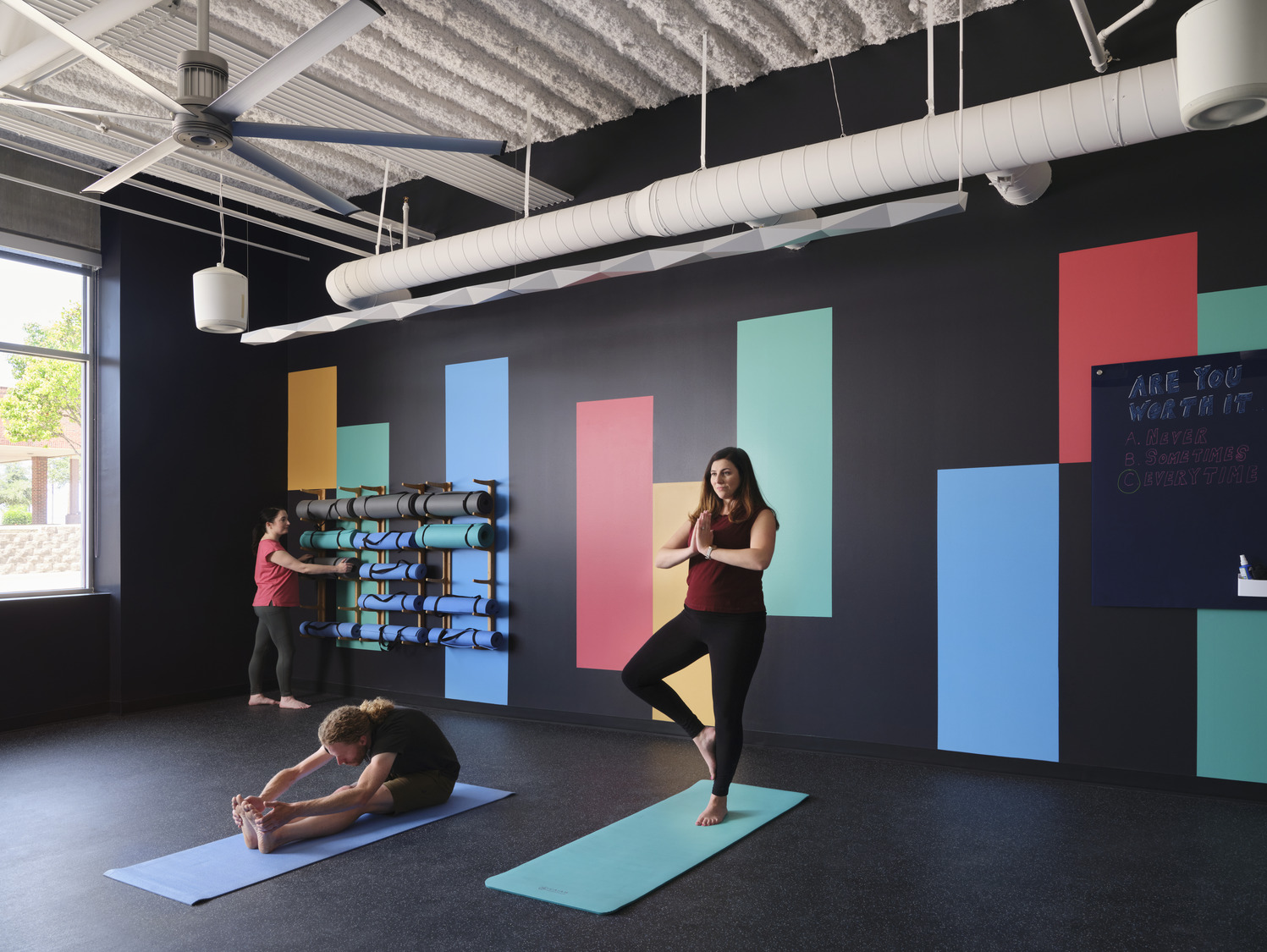
Yoga and mediation studios on site provide opportunities for individual practice and/or the ability to bring in teachers for regular classes.
Efficient, Collaborative Team Hubs
Communication and teamwork are important factors in providing knowledgeable, efficient, high-quality patient care. They’re also important to enabling a supportive, teamwork environment and are most certainly influenced by the spaces in which people work and the design of those spaces. Designing efficient team hub spaces where healthcare professionals can come together to discuss cases and treatment options, collaborate to overcome challenges, and mentor each other help create strong, resilient teams and a sense of community.
Unlike staff-only cafés and breakrooms, team hubs may be more accessible to patients, but should still have some separation to ensure private conversations stay private and healthcare workers can focus on the tasks at hand. Fully equipped with technology and located in areas that are easily accessible for the people who will utilize them, team hubs can inspire knowledge sharing and result in a higher level of patient care.
For the Saint Alphonsus Neuro, Surgical, Trauma ICU, the Cushing Terrell team designed technology infused team hubs to support collaboration and comradery.
Designers as Advocates
As designers, we know we have an important role as strategic advisors for our clients, offering guidance, ideas, knowledge, best practices, and innovations to ensure successful projects. Another role we can add is that of advocates — advocates for the users of a space, in this case healthcare professionals.
There’s always budget to consider as well as the type of practice and size of the facility, but all of the strategies listed above can be designed to scale to suit those different types of environments and practices and the needs of the healthcare workers. Workplace environments should never be an afterthought, and as we deal with the ramifications of an exodus of people from the healthcare profession — which impacts us all — and we see the toll of the work, we should be doing everything in our power to make caregiver well-being front and center when we design healthcare spaces.

